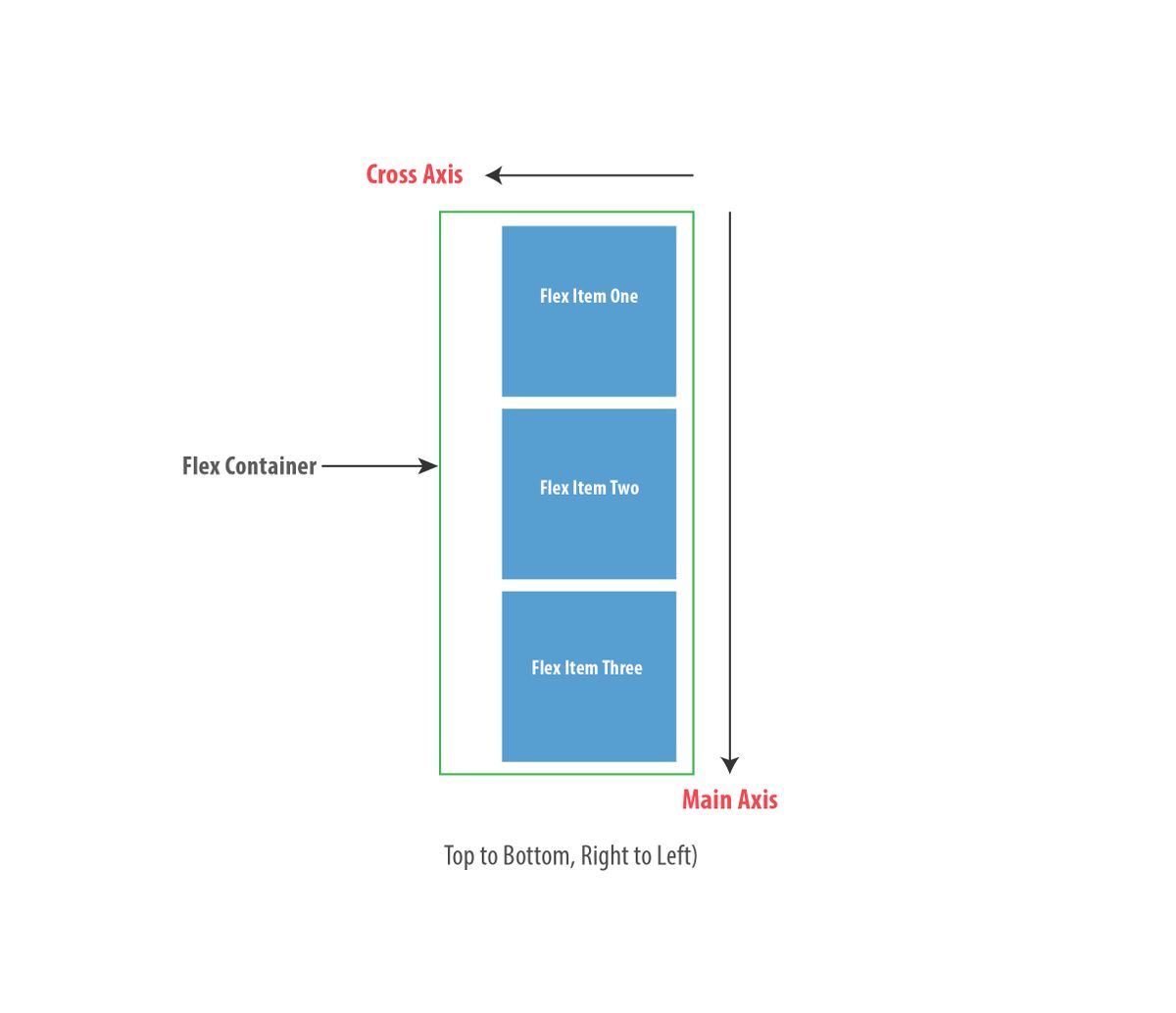What happens when you switch flex-direction?
We'll cover the following...
We'll cover the following...
When starting off with learning the flexbox model, this part was the most confusing. I bet a lot of newcomers to the flex world find it that way too.
You remember when I talked about the default main and cross axis being in the “left-to-right” and “top-to-bottom” directions?
.jpg)
Well, you can change that too. Which is exactly what happens when you use flex-direction: column as described in an earlier section (remember the default value is flex-direction: row). When you do this, the main and cross axis are changed as seen below:

If you’ve ever written any text in the English language, then you already know the language is written from left-to-right and top-to-bottom. That’s equally the direction taken for the default main and cross axis ...